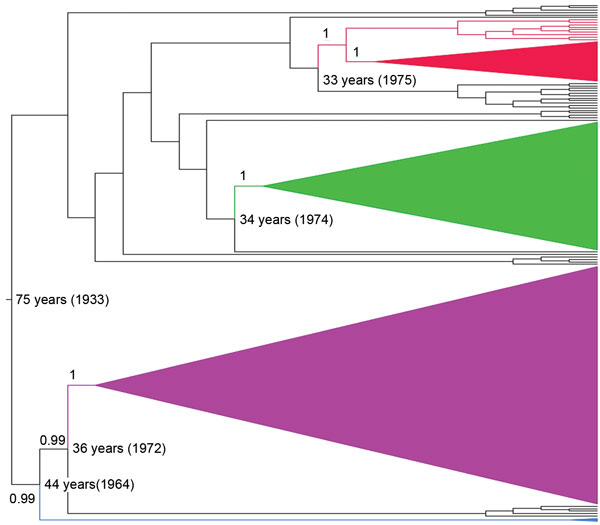Volume 19, Number 9—September 2013
Research
Enzootic and Epizootic Rabies Associated with Vampire Bats, Peru
Figure 2

Figure 2. . Phylogenetic tree generated by using Bayesian analysis for a 1,274-nt portion of the gene-coding sequences of rabies virus isolates collected in Peru during 2002–2007. Red, lineage II (found in Peru, Brazil, and Uruguay); green, lineage I (found in Peru, Ecuador, and Colombia); purple, lineage IV (found in Peru and Colombia); blue, lineage III (found in Peru). Posterior probabilities and lineage ages are shown for all major nodes.
No table matches the in-text citation "Table 1". Please supply a table or delete the citation.
No table matches the in-text citation "Table 2". Please supply a table or delete the citation.
No table matches the in-text citation "Table 1". Please supply a table or delete the citation.
Page created: August 20, 2013
Page updated: August 20, 2013
Page reviewed: August 20, 2013
The conclusions, findings, and opinions expressed by authors contributing to this journal do not necessarily reflect the official position of the U.S. Department of Health and Human Services, the Public Health Service, the Centers for Disease Control and Prevention, or the authors' affiliated institutions. Use of trade names is for identification only and does not imply endorsement by any of the groups named above.